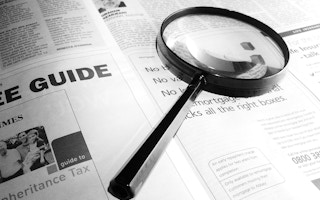In an age of 140-character tweets, in-your-face advertisements, and the 24-hour news cycle, it’s no wonder that even the best intentioned people are having the hardest time sifting through the noise to make well-informed, evidence-based conclusions.
According to a 2016 survey conducted by the US-based, non-partisan Pew Research Center, a majority of US adults—62 per cent—get their news on social media, and 18 per cent do so often. Observations and opinions about social media and fake news stories have also amplified in recent weeks in terms of their perceived role in influencing the outcomes of the recent US presidential elections.
Even US president Barack Obama publicly voiced his concern, lamenting that “if we can’t discriminate between serious arguments and propaganda, then we have problems”.
Living in this era of social media and fast-paced information, it’s understandable that most of us—wilfully or not—want information fast and snappy. Perhaps worse is that some of us may even give something we saw on Facebook or Twitter the same level of weight or credence as something we might have read in a peer-reviewed article or report. We often do not spend the extra time to validate the original source or to find another source (or two or three!) to corroborate the information.
From human rights to climate change, the challenges we face today are all, by nature, complex challenges that deserve all the facts, evidence, and words that we can get our hands on. We at Corporate Citizenship recognise the complexities that exist in our work and strive every day to bring to our clients the information they need to create effective solutions.
Fortunately, we have some momentum on our side. The business world has shown ability and even adeptness at using facts, figures, and critical thinking—rather than relying solely on emotions and personalities—to make decisions.
Take for example, corporate science-based climate targets. Thanks to the Science Based Targets initiative, a partnership between CDP, UN Global Compact, WRI, and WWF, companies now have the guidance and evidence they need to develop ambitious greenhouse gas emissions reduction targets based on the most up-to-date scientific knowledge relevant to climate change. More than 200 companies have committed to science-based climate targets to date, including a game-changing commitment by Walmart, the world’s largest retailer and private sector employer, just last month.
As corporate responsibility practitioners, we must continue to espouse these principles of responsible research and evidence-based decision-making within our respective organisations and across all aspects of our work.
So, in the spirit of living up to these principles, here are a few practical reminders:
- Find the original source. When looking for data to support your analysis or argument, make sure to look for the original source that is providing the evidence—don’t just rely on the intermediary source where you may have first found the information. It would do your analysis or argument no service if it turns out that the source you cited didn’t interpret the original data correctly.
- Find multiple sources. When making strong claims, especially potentially controversial ones, it would be time well spent to do the extra due diligence to find multiple sources that help support your argument. In a recent materiality assessment that we conducted, not only did we look at more than 40 sources of information to construct our client’s material issue list, we also gathered a slew of primary data from multiple sources—from employee surveys to stakeholder interviews to executive workshops—to support and justify our rationale, analyses, and outputs.
- Look for other viewpoints. As one would say, there are two sides to every story. Even the most credible sources likely show some bias, whether this bias is demonstrated by the tone or word choices that are used or by the points or facts that are included or excluded (sometimes deliberately) from the source. Finding sources that provide an alternate or opposing viewpoint can help strengthen your argument and may even enhance or change the way you think about the original issue.
- Be critical. This should go without saying, but be critical and investigate the source. This is the point where we have resist our natural tendencies to take what we see or read as factual without spending some time understanding where the data came from, how the data was constructed (and in some cases, how the construction of the data was financed), and who the data might have been originally intended for. Getting to the bottom of some of these questions will help you feel confident that the data you are using is credible.
- Finally, be transparent. Make sure to indicate your source and where you found it. This information not only helps ensure credibility with external audiences, but it’s also useful to internal audiences who want to understand how you built your argument and arrived at your conclusion or decision. Providing citations and hyperlinks for quotations, paraphrases, tables and images, and figures throughout your work, as well as including a reference list in the appendix (yes, even in your PowerPoint deck!) will help you achieve this transparency.
While these tips sound pretty simple and obvious, they are not easy to implement day in and day out, especially in our fast-paced world of business where the desire for the next 30-second elevator pitch, 10-word headline, or 3-bullet answer constantly looms.
“
From human rights to climate change, the challenges we face today are all, by nature, complex challenges that deserve all the facts, evidence, and words that we can get our hands on.
But if this can serve as even a friendly reminder to those of us in corporate responsibility, what’s just as important as achieving our goals is the manner in which we achieve them.
And in this particular case, finding and using information responsibly can make all the difference in the world to making our case for greater corporate action on some of society’s biggest challenges.
Jesse Nishinaga is a Senior Consultant at Corporate Citizenship.


















